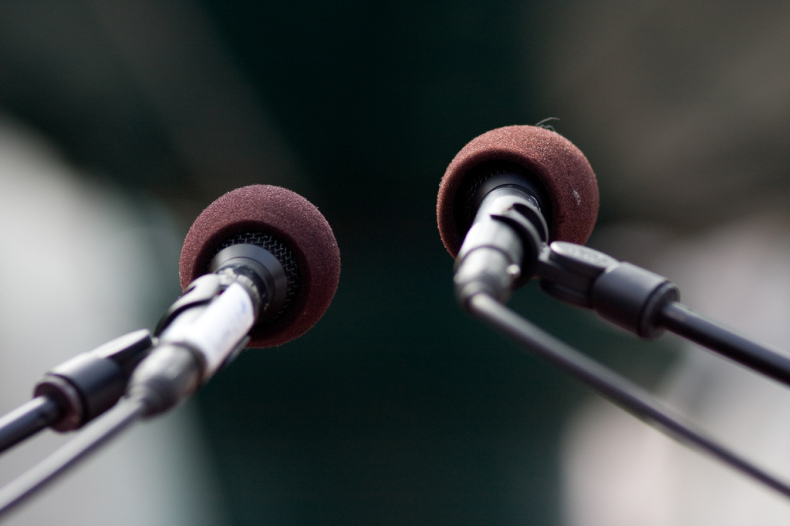Newsflash — Press releases about medical studies may contain hype. That was the conclusion of a report published last week in the medical journal BMJ.
Petroc Sumner, a professor at Cardiff University, compared 462 press releases on medical studies from leading United Kingdom universities in 2011 and found that 33 to 40 percent of the time, they contained exaggerations. These exaggerations then made their way into news stories.
A number of media outlets covered Sumner’s study. Wired UK’s headline read, “Universities cause more medical distortions than journalists.” At the Atlantic, medical writer James Hamblin discussed how the blame for exaggeration is commonly placed on journalists, but often lies with universities. “Ideally the endpoint of that press release would be the simple spread of seeds of knowledge and wisdom,” Hamblin writes.
Really? As a journalist who has covered science, but also a wide range of other topics, my response to this finding can be captured in one word: “Duh.”
 If press releases are supposed to be trustworthy, that’s news to me. I’m a reporter. Someone is always trying to sell me on his or her idea — with a press release. An environmental group says they’ve found “the one true way“ to make safe nuclear power. Startups lay claim to a “world-changing” app. Businesses trumpet their latest gadget, an “industry game changer.” Mostly, this is bullshit. Everyone is competing for attention and dollars, and press releases are their bid to get both of those things. Universities and academic journals are no different.
If press releases are supposed to be trustworthy, that’s news to me. I’m a reporter. Someone is always trying to sell me on his or her idea — with a press release. An environmental group says they’ve found “the one true way“ to make safe nuclear power. Startups lay claim to a “world-changing” app. Businesses trumpet their latest gadget, an “industry game changer.” Mostly, this is bullshit. Everyone is competing for attention and dollars, and press releases are their bid to get both of those things. Universities and academic journals are no different.
But in the science news world, they are often treated as if they are. I’ll acknowledge that this makes a kind of sense. Science is complicated and journalists, even those trained in science, are usually covering something they are inexpert in. So press releases can help journalists understand what’s important about a study and provide a jumping-off place for interviews with authors and outside sources.
At Only Human, former LaWONian Virginia Hughes offered up some ways science press releases might be made more accurate. One suggestion, from writer and doctor Ben Goldacre, is to make sure scientists’ names go on the press releases — making them responsible for the information in the releases, as well as the journal article. It’s a reasonable suggestion that might help.
But to fully address the problem, journalists need to reassess how we determine what’s newsworthy in the first place. Right now, peer-reviewed journals basically run the news. They do this by deciding which articles they will release each week. Reporters diligently cover those releases. When I covered climate science full time, a significant part of my week involved tracking the scientific journal publishing cycle and writing stories based on new journal articles.
Press releases or no, I find this problematic, because it allows journal editors to set the agenda. These editors, especially at top tier journals, have a strong bias toward novel, counterintuitive, and cutting edge (but perhaps wrong) findings. The press releases that accompany such articles, put out either by universities or the journals, stretch the bias even further, exaggerating findings or even pulling out minor details from an article as their main thrust, in hopes of gathering news coverage. University press offices in particular have gotten scarily skillful at this, perhaps because they employ many out-of-work journalists who know how to turn a boring journal article into a clever hed. (Living fossils have hot sex, anyone?) Even if reporters call outside sources and carefully write their stories, they are letting the press release and the journal article direct their coverage.
When journalists hand the power to decide what’s news to the journals, they do readers a disservice. Journals don’t decide what to publish, and what to publicize, with the public’s interest in mind. Their loyalties lie elsewhere, to things like prestige, profit, and press coverage.
Here’s an alternative: instead of covering new journal articles as news events, science writers should work more like traditional reporters, working a beat and using regular interviews with practitioners in the field — doctors or scientists — to help them decide on what’s news.
It’s not that all new journal articles and accompanying press releases should be ignored. Journal publishing is a key part of scientific research, after all. But the decision to cover a journal article should be made by a reporter inside the bigger context of their beat. Ideally, this would lead to fewer “study-stories.” Reporters and their editors would take back control over what is considered news, a power that is one of the most important aspects of their jobs.
When I covered climate science, a hot topic was a hypothesis posing that a warming Arctic is making the jet stream wavier, leading to severe weather getting stuck in one place. One proponent of the hypothesis, and her research, got a lot of play in major journals. But many scientists I spoke with were more skeptical than the press releases and news coverage indicated. Eventually I decided the best way to cover the story was to write a piece on just how controversial and unproven that idea actually was.
This approach is more work. But unlike many study-oriented stories I wrote, I’m proud of that coverage. And, I think, it better serves the reader.
____________
Stephanie Paige Ogburn reports on science, energy and a whole lot of other topics from Denver, Colorado, where she is a staff reporter at KUNC. Follow her @spogburn.
____________
Images: Microphones by Håkan Dahlström via Flickr. “Duh!” gif from Reaction GIFs.

A couple of thoughts from inside academia. Different disciplines have different conventions about the order of authors on a journal article. It’s good to know what those conventions are so you can get to the person who really did the work rather than the famous guy. Especially if — and this is point two — that person is the graduate student from whose dissertation the article is derived.
Speaking from outside academia and experience interviewing famous guys and then their graduate students, Dr. Schoenberger as usual is 100% right.